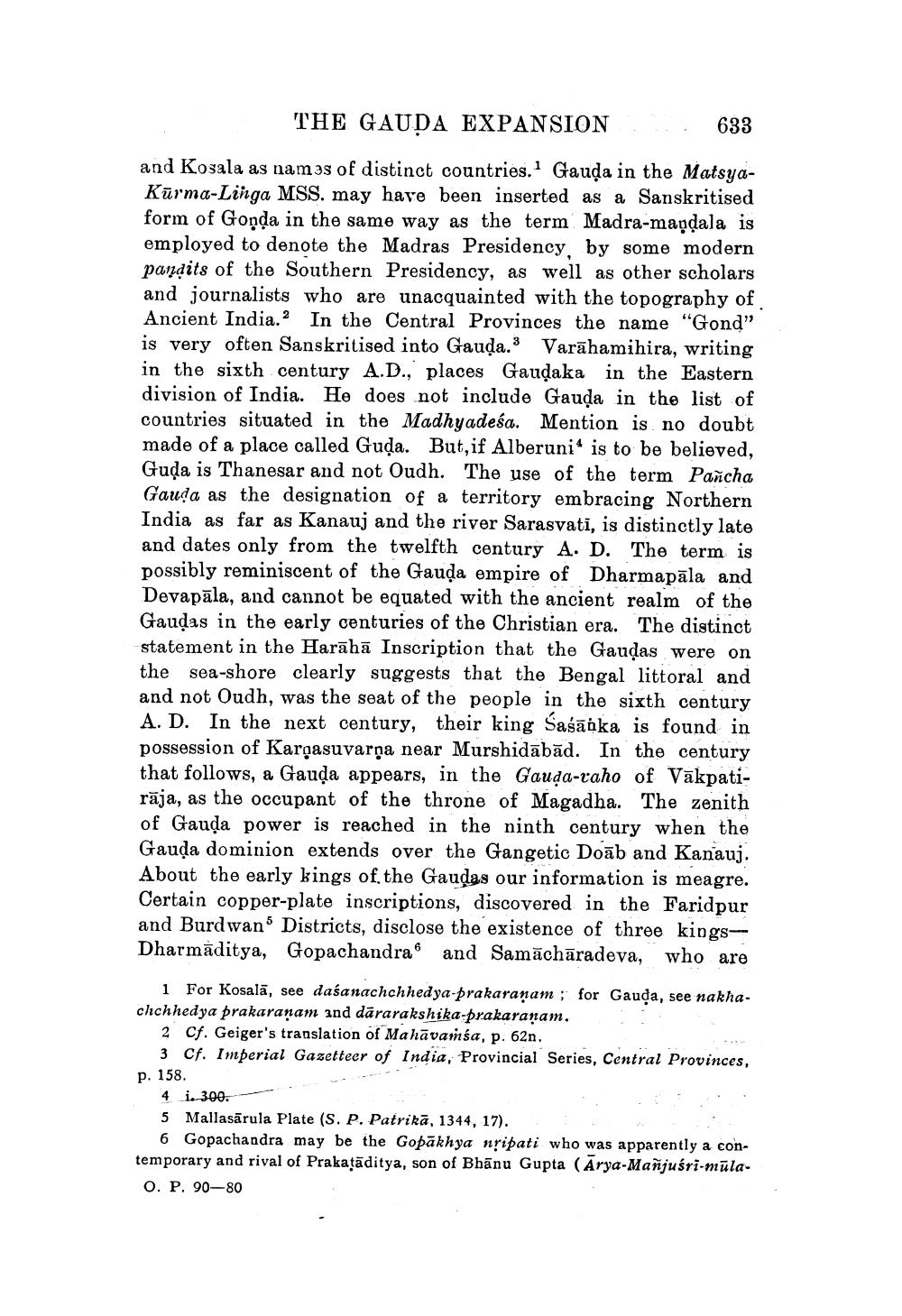________________
THE GAUDA EXPANSION
633
and Kosala as names of distinct countries. Gauda in the MatsyaKurma-Linga MSS. may have been inserted as a Sanskritised form of Gonda in the same way as the term Madra-mandala is employed to denote the Madras Presidency, by some modern pandits of the Southern Presidency, as well as other scholars and journalists who are unacquainted with the topography of Ancient India.2 In the Central Provinces the name "Gond" is very often Sanskritised into Gauda. Varahamihira, writing in the sixth century A.D., places Gaudaka in the Eastern division of India. He does not include Gauda in the list of countries situated in the Madhyadeśa. Mention is no doubt made of a place called Guda. But, if Alberuni is to be believed, Guda is Thanesar and not Oudh. The use of the term Pancha Gauda as the designation of a territory embracing Northern India as far as Kanauj and the river Sarasvati, is distinctly late and dates only from the twelfth century A. D. The term is possibly reminiscent of the Gauda empire of Dharmapala and Devapāla, and cannot be equated with the ancient realm of the Gaudas in the early centuries of the Christian era. The distinct statement in the Haraha Inscription that the Gauḍas were on the sea-shore clearly suggests that the Bengal littoral and and not Oudh, was the seat of the people in the sixth century A. D. In the next century, their king Sasanka is found in possession of Kargasuvarna near Murshidabad. In the century that follows, a Gauda appears, in the Gauḍa-vaho of Vakpatiraja, as the occupant of the throne of Magadha. The zenith of Gauḍa power is reached in the ninth century when the Gauda dominion extends over the Gangetic Doab and Kanauj. About the early kings of the Gaudas our information is meagre. Certain copper-plate inscriptions, discovered in the Faridpur and Burdwan Districts, disclose the existence of three kingsDharmaditya, Gopachandra and Samacharadeva, who are
1 For Kosala, see daśanachchhedya prakaraṇam; for Gauda, see nakhachchhedya prakaraṇam and dararakshika-prakaranam.
2 Cf. Geiger's translation of Mahavamsa, p. 62n.
3
Cf. Imperial Gazetteer of India, Provincial Series, Central Provinces,
p. 158.
4 i. 300.
5 Mallasarula Plate (S. P. Patrika, 1344, 17).
6 Gopachandra may be the Gopakhya nṛipati who was apparently a contemporary and rival of Prakaṭāditya, son of Bhanu Gupta (Arya-Mañjuśri-mula
O. P. 90-80




